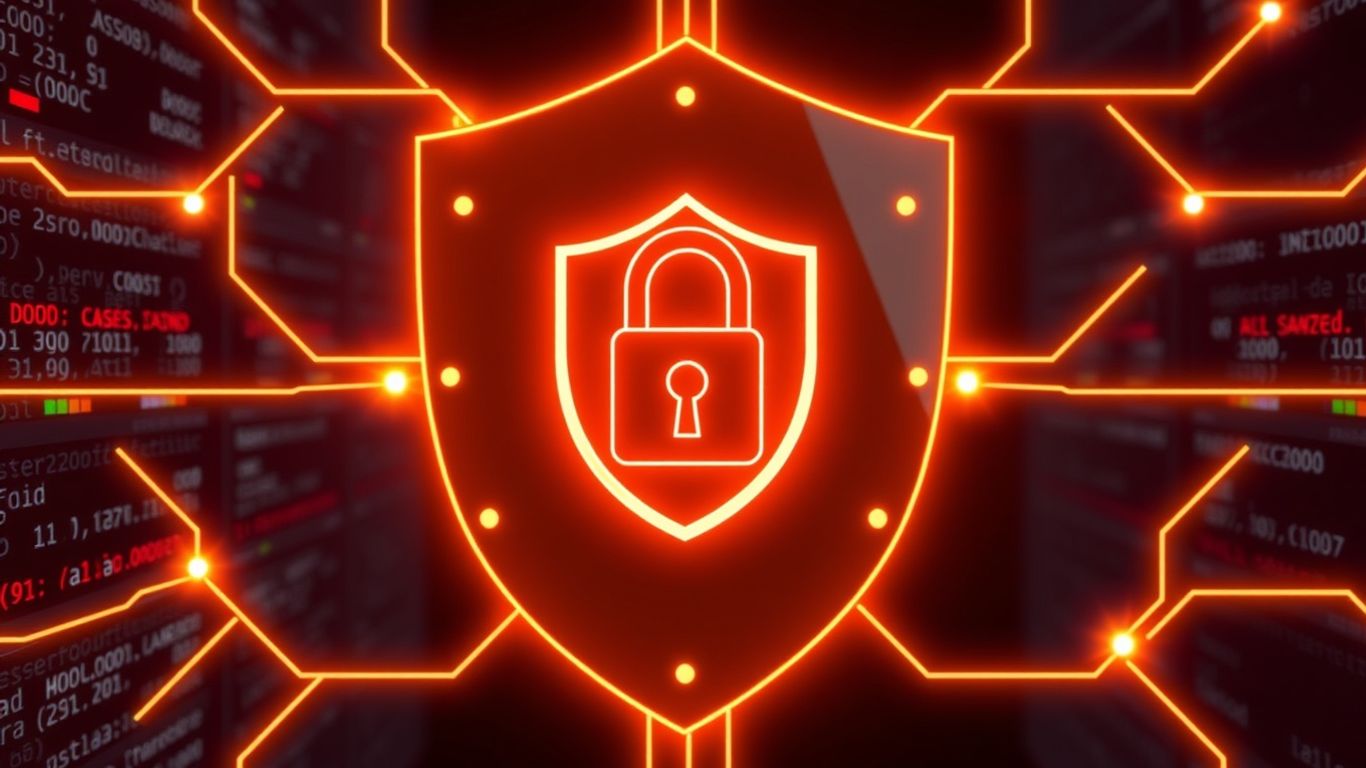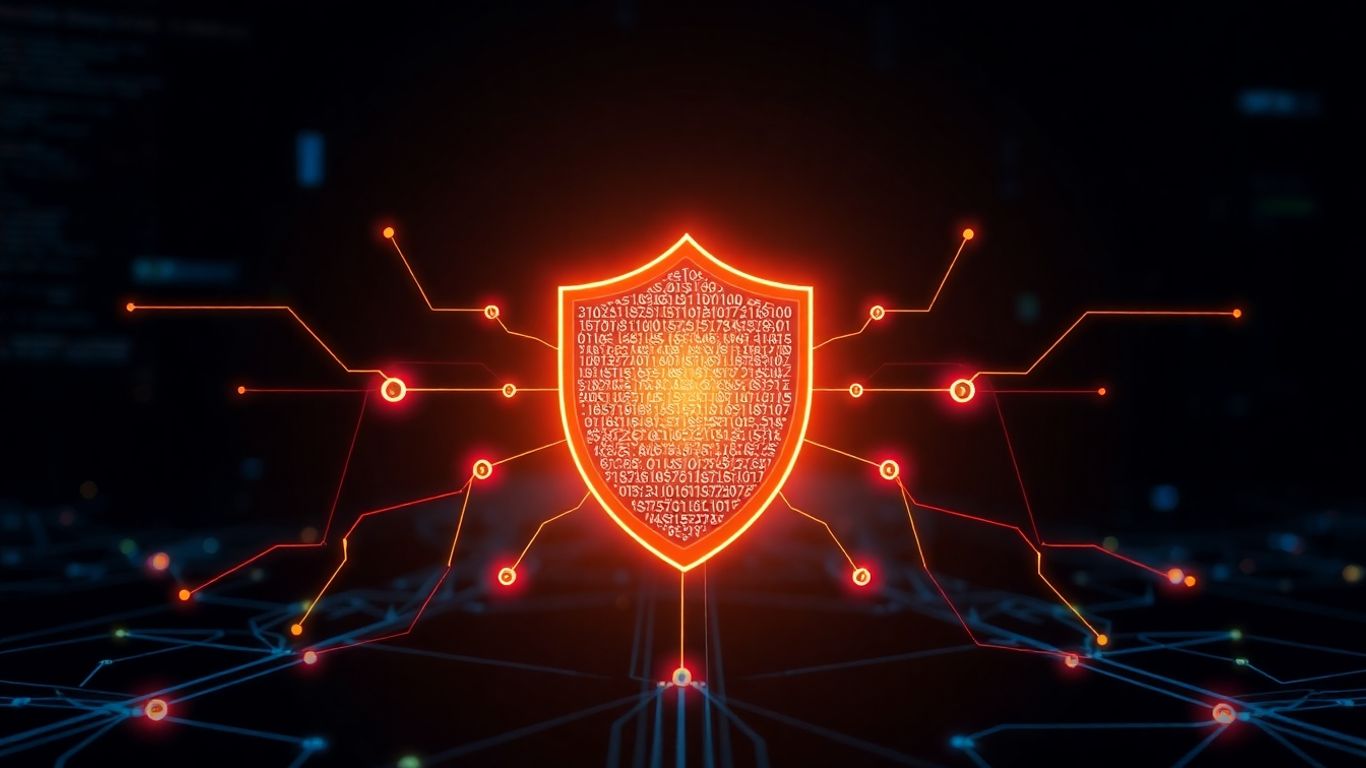[ newsletter ]
Stay ahead of Web3 threats—subscribe to our newsletter for the latest in blockchain security insights and updates.
Thank you! Your submission has been received!
Oops! Something went wrong. Please try again.
Enhance your defenses with our essential cyber security audit service guide for 2025. Understand scope, threats, controls, and leverage findings for robust protection.





In today's digital world, keeping your company's information safe is a big deal. Data breaches happen all the time and can cost a lot of money and trust. That's where a cyber security audit service comes in. Think of it as a regular check-up for your computer systems and data. It helps find weak spots before bad actors can find them. This guide will walk you through what a cyber security audit service does and how to get the most out of it.

Think of a cybersecurity audit like a health check for your digital stuff. It’s a formal look at how well your systems, networks, and data are protected against online threats. The main point is to find weak spots before bad actors do. It’s not just about ticking boxes for compliance, though that’s part of it. It’s really about making sure your business can keep running smoothly without getting hit by a data breach or some other cyber mess.
A cybersecurity audit is a systematic review designed to pinpoint weaknesses in your digital defenses and confirm that your security practices are up to par with current threats and regulations. It’s a proactive step to safeguard your organization's information assets.
Not all businesses are the same, and neither are their risks. What might be a major problem for one company could be a minor inconvenience for another. That's why understanding your organization's specific risk tolerance is key. It's about figuring out how much risk you can realistically handle and what level of security is appropriate for your operations and the data you manage. This isn't a one-size-fits-all situation; it requires looking at your industry, the type of data you handle, and what could happen if that data were compromised.
A thorough cybersecurity audit looks at everything. It’s not just about the firewalls and antivirus software. Auditors will examine your physical security, your employee training programs, your data backup procedures, and how you handle access to sensitive information. They want to see the whole picture, from the servers in your data center to the laptops your employees use at home. This broad approach helps uncover risks that might be missed if you only focused on one area.
Here’s a look at what typically gets reviewed:
Before diving into the technical bits, you need to get clear on what you actually want this audit to achieve and what parts of your digital world it's going to look at. Think of it like planning a trip – you wouldn't just hop in the car without knowing where you're going or what sights you want to see, right? The same applies here.
First off, what exactly are we auditing? You need to draw a line around the systems, networks, applications, and even specific data sets that will be part of this review. It's not always practical to audit everything at once, especially if you have a sprawling IT setup. So, you'll have to make some choices. Prioritize based on what's most important to your business and what carries the biggest risk if compromised. This means identifying your crown jewels – things like customer databases, financial records, or proprietary information. You also need to decide what's not going to be included. Being upfront about this prevents confusion later on.
Here’s a quick way to think about what to include:
This ties directly into defining your scope. You can't protect what you don't know you have, or what you don't realize is important. Take some time to really map out your organization's digital assets. What are the things that, if they were lost, stolen, or made unavailable, would cause significant damage? This could be anything from your main customer relationship management (CRM) system to the specific code that makes your product unique.
Identifying your most valuable assets is the first step in building a strong defense. Without this knowledge, you're essentially guessing where to put your security resources.
What do you want to get out of this audit? Are you trying to meet a specific industry regulation, like HIPAA or PCI DSS? Are you just looking to find weak spots before someone else does? Or maybe you're trying to check if your employees are actually following the security rules you've put in place. Having clear goals helps the auditors focus their efforts and makes it easier to measure whether the audit was successful. It also helps you decide which areas need the most attention. For example, if your main goal is compliance with GDPR, the audit will heavily focus on data privacy controls and how personal data is handled, rather than, say, the security of your internal development servers.
Your goals might look something like this:
So, what exactly are we looking for when we talk about cyber threats? It's not just about hackers in hoodies, though that's part of it. We need to look at everything that could go wrong, from outside forces to issues within our own walls. Understanding the landscape of potential dangers is the first step to building a solid defense.
These are the dangers that come from outside your organization. Think of them as the usual suspects. Phishing emails are still a big one; they're designed to trick you into giving up passwords or clicking on bad links. Then there are Distributed Denial of Service (DDoS) attacks, which basically try to shut down your services by flooding them with traffic. Malware, like ransomware that locks up your files until you pay, is another constant worry. We also see automated attacks, where bots try to find weak spots or mimic user activity to get in.
It's not always an outside job. Sometimes, the risks come from within. This could be anything from employees using weak or reused passwords, which are easy to guess, to accidental mistakes that open up security holes. We also have to consider insider threats, where someone with legitimate access might misuse it, intentionally or not. Even the devices employees use to connect to the network, like personal laptops or phones, can be entry points if they aren't properly secured. It's about looking at people, processes, and technology from the inside out.
Automated attacks are becoming more sophisticated. These aren't just simple scripts anymore. We're talking about bots that can scan networks for vulnerabilities at high speed, attempt to brute-force passwords, or even mimic legitimate user behavior to bypass security measures. They can launch attacks at a scale and speed that humans simply can't match. This means our defenses need to be just as automated and quick to respond. Keeping an eye on cyber threat detection tools can help identify these kinds of automated threats before they cause real damage.
When we assess threats, we're not just listing bad things that could happen. We're trying to figure out how likely they are and what would happen if they did occur. This helps us focus our efforts where they matter most, rather than trying to fix everything at once. It's about being smart with our security resources.
So, you've gone through the process of figuring out what could go wrong and what you're trying to protect. Now comes the nitty-gritty: looking at what you're actually doing to keep things safe and seeing where the weak spots are. It’s like checking if your house doors are locked and if the windows are actually shut tight, not just looking like they are.
This part is about seeing if the security rules and procedures you say you have in place are actually being followed. It’s not enough to have a policy that says "all employees must use strong passwords." You need to check if they actually are. This involves looking at how things are done day-to-day.
It's easy to write down good intentions, but the real test is in the execution. Are your teams actually living by the security standards you've set, or are they taking shortcuts when no one's looking?
This is where you pinpoint what's missing or not working as it should. Think about outdated software that hasn't been patched, or maybe a process that's so complicated people just skip parts of it. We're looking for the things that leave you open to trouble.
Who can get into what? And how is your network protected from the outside? This is a big one. You need to make sure that only the right people have access to the right information and that your network is properly segmented and protected.
The goal here is to find the cracks before someone else does.
So, you've gone through the whole audit process, and now you have a big report full of findings. What do you do with it? It's not just about ticking boxes; it's about actually making your systems safer. The first step is to sort through everything and figure out what's most important. You can't fix everything at once, right? So, you need a plan.
Think of it like this: if your house has a leaky faucet and a cracked foundation, you fix the foundation first. It's the same with cyber security. You need to look at each finding and decide how bad it is. Is it something that could cause a major data leak tomorrow, or is it a minor issue that's unlikely to be exploited? Most auditors will give you a risk score, but you also need to consider your own business. What data is most sensitive? What systems are most critical to your operations?
Here's a way to think about it:
The goal is to focus your limited time and money on the things that will make the biggest difference in protecting your organization. This approach helps you get the most security bang for your buck.
Once you know what to fix, you need to make a plan. Who's going to do what? By when? It's not enough to just say
When you're looking into your security, you can't just eyeball it. You need actual tools to find the weak spots. Think of vulnerability scanners as the digital equivalent of a locksmith checking every door and window in your building. They poke and prod at your systems, looking for known weaknesses, outdated software, or misconfigurations that someone with bad intentions could exploit. These tools can scan networks, applications, and even individual devices. The goal is to find problems before attackers do. Some tools focus on network-level issues, while others dig deeper into application code or specific operating systems. It's about getting a clear picture of what's exposed.
Audit logs are like the security cameras of your digital world. They record who did what, when, and where within your systems. When you're preparing for an audit, these logs are gold. They provide the evidence needed to show that your security policies are actually being followed. Beyond audits, they're incredibly useful if something goes wrong. If there's a security incident, logs help you piece together what happened, how far it spread, and what needs to be fixed. Without good logging, figuring out the cause of a breach can be like trying to solve a mystery with half the clues missing. You need to make sure your logging is set up correctly and that the logs are stored securely and are easy to access for review. This is a key part of information security audit tools.
Trying to audit different parts of your IT setup separately is like trying to build a puzzle with pieces from different boxes. It just doesn't work well. Modern cybersecurity audits benefit a lot from integrating various systems. This means connecting your security tools, your IT management platforms, and your logging systems so they can share information. When these systems talk to each other, you get a much clearer, more complete view of your security posture. For example, an alert from a vulnerability scanner can automatically trigger a check of access logs to see who might have been affected. This kind of integration makes the whole audit process more efficient and the findings more accurate. It helps avoid those annoying gaps where a problem might slip through because one system didn't know what another was doing.
Relying solely on manual checks or disconnected tools for security audits is a recipe for missed vulnerabilities. Automation and integration are no longer optional; they are necessary for keeping pace with evolving threats and regulatory demands. The right tools, working together, transform audits from a chore into a strategic advantage.

So, you've gone through the whole audit process, identified some issues, and hopefully, have a plan to fix them. But what's the point if you can't show that you're actually meeting the rules and that people can rely on you? That's where this part comes in. It's all about making sure you tick the right boxes for regulations and, just as importantly, making sure your clients, partners, and even your own team feel confident in your security setup.
Lots of industries have specific rules about how you handle data and keep things secure. Think HIPAA for health information, GDPR for personal data in Europe, or PCI DSS for credit card payments. A cybersecurity audit is your way of checking if you're actually following these rules. It's not just about avoiding fines, though that's a big part of it. It's about showing you're a responsible organization that takes data protection seriously.
Compliance isn't a one-time event; it's an ongoing commitment. Regular audits help you stay on track and adapt as regulations change.
When you're looking to work with other companies, especially larger ones or those handling sensitive information, they're going to want to know you're not going to be the weak link in their security chain. A good audit report can be like a stamp of approval. It shows them you've done your homework and have a solid security setup. This can make the difference between landing a big contract or being passed over.
Here's what partners often look for:
An audit isn't just for the IT department. When the results are shared and discussed openly, it helps everyone understand their role in keeping the company secure. People are more likely to follow security policies if they know they're being checked and if they understand why those policies are important. It creates a culture where security is everyone's job, not just a technical problem for someone else to solve. This shared responsibility makes the whole organization stronger against cyber threats.
So, we've walked through what a cybersecurity audit really is and why it's not just a good idea, but pretty much a necessity these days. It's about more than just checking boxes for compliance; it's about actually seeing where your weak spots are before someone else finds them. Think of it as getting a clear picture of your digital health. By regularly looking at your systems, identifying risks, and fixing those gaps, you're building a much tougher shield against the bad guys. Tools like StrongDM can really help streamline this whole process, making it less of a headache and more of a proactive step. Don't wait for a problem to happen. Start planning your next audit now and keep your business safe.
Think of a cybersecurity audit like a check-up for your computer systems and online safety. It's a detailed look at how your organization protects its digital information, networks, and important data. The main goal is to find any weak spots or problems that hackers could use to get in and cause trouble. It also checks if your security rules and tools are working well and following the right guidelines.
Companies need these audits because cyber threats are always changing and getting more serious. Audits help businesses find problems before bad guys do, which can save them from losing money, having their reputation ruined, or stopping their work. It's also important for following rules and showing customers and partners that their information is safe.
A good audit checks many things. This includes how secure your computer network is, how you protect private information, how safe your apps are, and even how your employees handle sensitive data. It also looks at things like passwords, who has access to what, and how you'd handle a security emergency.
There's no single answer, but it's smart to do them regularly. Many companies do a full audit once a year. However, it's also good to do smaller checks more often, especially if new technology is added or new security rules come out. Think of it like visiting the doctor regularly to stay healthy.
After the audit, you get a report that lists all the problems found and suggests ways to fix them. The most important part is to actually do the fixes! You need to figure out which problems are the most dangerous and fix those first. Then, you keep an eye on things to make sure the fixes are working and that new problems don't pop up.
Yes, tools like StrongDM can be very helpful! They make it easier to manage who can access your important systems and keep records of who did what. This detailed record-keeping, called audit logs, is super important for proving you're following security rules and for figuring out what happened if there's a security problem.


